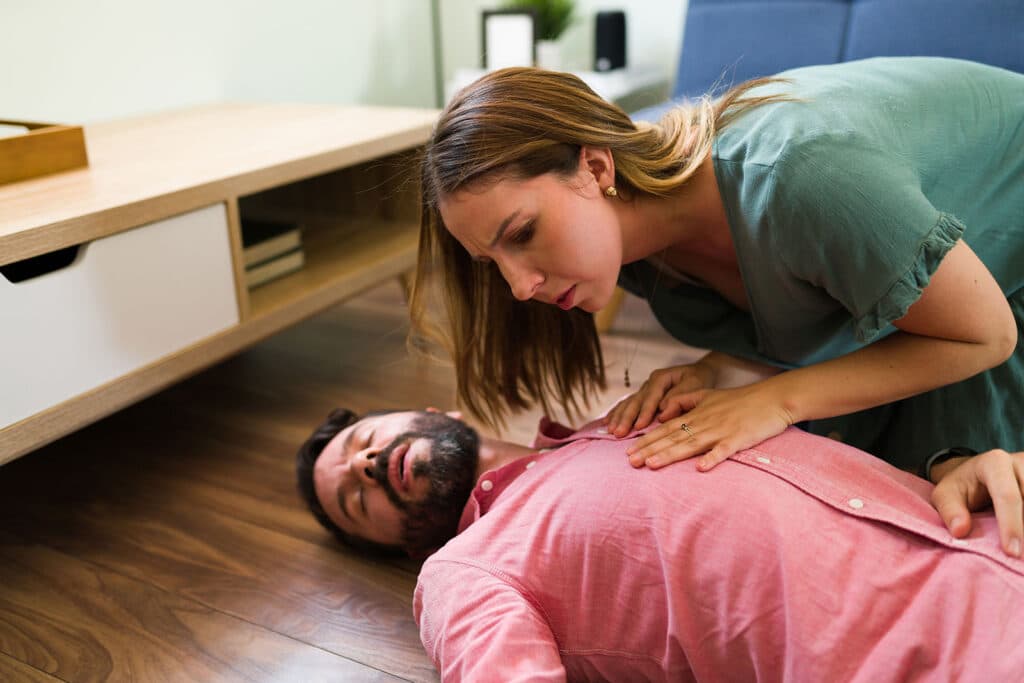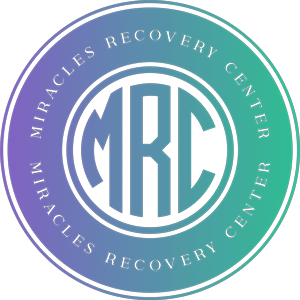If you use heroin or opioids, you may find yourself nodding out. This occurs when the individual who took the narcotic seems to doze off or fall asleep momentarily. This can be a side effect and happen directly after injecting or consuming the opiate. If you’re not familiar with the term nodding out, you can think of it like someone who becomes so bored during a class or meeting that they cannot stay awake. Unfortunately, nodding out due heroin use or another opiate is quite a bit more serious than nodding off due to being extremely bored. Let’s take a look at what causes opioid-induced nodding out and how to get help to overcome your opioid use disorder.

Table of Contents
- 1 What are Heroin and Opiates?
- 2 The Effects of Opioids
- 3 Understanding “Nodding Out”
- 4 The Dangers of “Nodding Out”
- 5 The Relationship Between Dosage and Nodding Out
- 6 Physical and Psychological Effects
- 7 Potential Long-Term Implications
- 8 What to Do if You See Someone Nodding Out
- 9 Treatment and Overcoming Dependence
- 10 Getting Help at Miracles Recovery Center
What are Heroin and Opiates?
Heroin and opiates, like Codeine, Fentanyl, Hydrocodone, Morphine and Oxycodone are powerful central nervous system depressants. When these drugs are given out by prescription and taken correctly, they can help reduce pain. However, when they are taken in doses larger than prescribed and more often than prescribed, they can lead to dependency. It’s important to note that heroin has no medical use and is an illicit substance.
Opioids are generally categorized as natural, semi-synthetic and synthetic.
Natural Opioids
Natural opioids are derived from the opium plant. These include morphine, codeine and thebaine.
Semi-Synthetic Opioids
Semi-synthetic opioids use a natural opioid base but are created in a lab environment. Semi-synthetic opioids include hydromorphone, hydrocodone and oxycodone.
Synthetic Opioids
Fully synthetic opioids do not use any part of a natural plant or substance. They are fully created in a lab. Synthetic opioids include dextropropoxyphene, fentanyl, levorphanol, methadone, pethidine and tramadol.
The Effects of Opioids
Opioids affect the central nervous system via opioid receptors. There are five types of opioid receptors, including Delta, Kappa, Mu, Nociception and Zeta. These receptors can be found throughout the central nervous system, including in the brain and spinal cord. Of the five types of opioid receptors, three are distinct, and those are mu, kappa and delta.
- Mu – Mu receptors are primarily responsible for pain relief. However, these are also associated with euphoria and the brain’s reward system. The Mu receptors are also responsible for respiratory depression, physical dependence and withdrawal symptoms.
- Kappa – Kappa receptors also help with pain relief. However, that pain relief is often associated with discomfort, unease, sedation and hallucinations.
- Delta – Delta receptors are believed to be responsible for reducing the perception of pain and for mood regulation.
Understanding “Nodding Out”
Nodding out after taking opioids occurs because the substance depresses the central nervous system. This effect can cause the individual to fluctuate between a state of wakefulness and drowsiness. When watching an individual nodding off, their head may droop. Then, they may jerk to a state of consciousness before their head droops again. This can give the appearance that the individual is nodding. Opioids can also depress the respiratory system and cause slurring of speech. During these episodes, the individual may be difficult to wake or completely unresponsive.
The Dangers of “Nodding Out”
Nodding out typically occurs after the individual has experienced the eutrophic part of the high. During this time, the entire body as well as the brain relaxes. This slows all the functions of the body and can become so severe that only the heart and lungs are functioning. The bad news is that the heart and lungs are also affected by the opioid, and the individual’s breathing can slow so much that it results in the brain not getting enough oxygen. Additionally, the individual:
- Could vomit and inhale that vomit in their semi-conscious or unconscious state, resulting in choking and even asphyxiation.
- Could become the easy target of a crime while they are unconscious.
- Is more likely to get hurt or injure themselves by running into things or falling down.
- Is more likely to get hurt if they are driving a car or operating a piece of equipment while under the influence of opioids.
- Is more likely to do something dangerous or harmful to their health due to their impaired state.
- Is at an increased risk of overdosing due to reduced respiration.
The Relationship Between Dosage and Nodding Out
If an individual nods out due to opioid use, they are at an increased risk of overdosing. In 2021, there were 106,699 overdose deaths in the United States with 80,411 due to opioids, according to the Centers for Disease Control and Prevention (CDC). Of the overdose deaths due to opioids, synthetic opioids are more likely to cause an opioid overdose death than natural opioids.
The risk of overdosing increases if the individual mixes the opioid with another drug or substance that depresses the central nervous system, including alcohol and/or benzodiazepines. Individuals who are experiencing an overdose may appear to have:
- Shallow breathing
- Dilated pupils
- Cold or clammy skin
- Nails or lips that appear blue due to oxygen deprivation
Additionally, the individual may present with symptoms of nodding out or be difficult or impossible to wake up due to the extreme drowsiness and episodic loss of consiousness. If any of these signs or symptoms appear, the individual needs immediate medical attention.
Physical and Psychological Effects
Opioid addiction and nodding out can lead to significant physical and mental health issues as well as financial instability and strained personal relationships.
Physical Effects
Repeated instances of nodding out can lead to respiratory arrest and failure. Taking opioids can stress the cardiovascular system, leading to an increased heart rates and risk of heart attacks, and it can weaken the immune system, leading to more frequent infections. Taking opioids can also affect the hormone levels in the body, leading to reproductive organ dysfunction in both sexes.
Mental Effects
In addition to the physical effects of opioid use, it can also affect the individual’s mental health. Long-term opioid use can increase a person’s risk of developing depression and anxiety, and it can lead to problems with focus, attention and memory. Individuals who use opioids may also have higher instances of certain mental health issues, like bipolar disorder and post-traumatic stress disorder.
Social and Financial Effects
Opioid use and nodding out can negatively affect relationships and lead to isolation and financial distress. Individuals who frequently nod out due to opioid use may frustrate and concern family members or loved ones, leading to stern conversations. Spending money on their drug of choice can lead to financial instability, further stressing the family unit.
Potential Long-Term Implications
Long-term opiate use can harm your health, especially if you find yourself nodding out after you use it. If you are sedated by your drug of choice to the point where you lose consciousness, you’re at an increased risk of overdosing. Since heroin and other opiates depress the function of your body, including your heart and lungs, you’re at an increased risk for hypoxia, which is low levels of oxygen in the body. When this happens repeatedly, it may result in permanent brain damage, coma and even death.
Long-term opioid use can result in damage to your liver and kidneys and lung disease. You may also be more prone to developing mental disorders, and if you inject the drug, it increases your risk of skin infections, bacterial infections, abscesses and collapsed veins. Not to mention, long-term use can lead to an increased tolerance for the drug, and as you continue to increase your dosage, you’re also increasing your risk for a drug overdose.
What to Do if You See Someone Nodding Out
Nodding out can be a sign of an overdose, where the blood pressure is lowered and body temperature as well. If you see someone nodding out and can’t rouse them for more than a few seconds, it’s best to call emergency services. If you have access to Narcan and know how to use it, administer a dose. Additionally, if you are a heroin user or another opiate, it’s best to never use it alone. That way, if you have a heroin overdose, someone will be there to call for emergency medical help. You can use your naloxone kit to temporarily reverse the effects of the overdose while waiting for medical help to arrive.
Treatment and Overcoming Dependence
The good news is that individuals who are addicted to opioids can recognize the signs of addiction and symptoms in themselves and get treatment at a professional treatment center, like Miracles Recovery in Port Saint Lucie, Florida.
Signs of Opioid Addiction
- Changes in hygiene
- Changes in sleeping patterns
- Drowsiness or nodding out
- Financial difficulties or stealing in order to obtain the drug
- Increased tolerance
- Loss of appetite or weight loss
- Social isolation
Opioid Addiction Treatment Options
There are many different types of treatment options available to individuals who are dependent on opioids, including inpatient treatment, outpatient treatment, evening IOP and partial hospitalization. If you or someone you know shows signs of drug abuse, addiction or heroin addiction, seek help at a substance abuse treatment program.
- Detox – Helps individuals stop drug use by letting the substance leave the body.
- Behavioral Therapy – Helps individuals identify negative behaviors and thinking and change them into positive thoughts and actions. Types of behavioral therapy include cognitive and dialectical behavioral therapy (DBT) as well as motivational interviewing.
- Medication-Assisted Treatment (MAT) – This involves taking a medication in place of the individual’s drug of choice. MAT therapy may include methadone, Naltrexone or Buprenorphine.
- Standard Outpatient – Standard outpatient treatment allows you to continue living at home while you receive counseling and medical services to help you recover from your opioid dependency.
- Evening IOP – This is a type of outpatient treatment that meets in the evenings so that you can go to work or school during the day.
- Intensive Outpatient (IOP) – A more intense version of outpatient treatment. Usually involves meeting for several hours multiple times a week for counseling and relapse prevention.
- Partial Hospitalization – These programs are more intense than IOP. Individuals usually spend more than 20 hours a week in treatment at the center. These programs include various types of counseling and medical services as well as relapse prevention.
- Specialty Rehab Programs – Specialty rehab programs are designed for certain groups of people. At Miracles Rehab Center, we have programs specialty designed for seniors, young adults, men and women.
- Support Groups – Support groups, like Narcotics Anonymous, and faith-based groups, can help individuals meet peers and learn additional coping skills and relapse prevention strategies.
Getting Help at Miracles Recovery Center
At Miracles Recovery Center, we can help you stop using opioids. We offer treatment for heroin, pain pills and other types of opioids. We offer several different types of outpatient treatment as well as partial hospitalization and Medication-Assisted Treatment (MAT). We even offer programs for men, women, seniors and young adults.
If you need help getting and staying sober due to a dependency on opioids, give us a call today!
